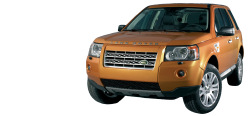IanMetro
Member Since: 11 Sep 2017
Location: Somerset BS21
Posts: 3509

 
|
I have listed what info I can find in the workshop manual. Grass/Gravel/Snow changes the mapping used in quite a few transmission / engine / brake settings. It gives a softer response, but I would wonder about transmission wind up if it is used a lot on non-slip surfaces.
Incorrect Program Usage
Selection of an inappropriate program is discouraged in the following ways:
The active program icon is continually displayed in the instrument cluster message centre
The Terrain Response control module 'locks' out certain functions in some programs, for example:
- cruise control is only available with the special programs off or grass/gravel/snow program
- transmission 'Sport' mode is deactivated in all special programs.
When the ignition has been in the off mode, continually for more than 6 hours, the Terrain Response system defaults to the special programs off.
Selection of an inappropriate program for the terrain conditions will not endanger the driver or cause damage to the vehicle. Continued use of an inappropriate program may reduce the life of some components. The driver may notice reduced vehicle response, with the engine and transmission being less responsive than in special programs off. Also, in some programs, HDC will remain on, signified by illumination of the HDC indicator in the instrument cluster. The driver may also notice torque 'wind-up' in the active on-demand coupling causing a braking effect when the vehicle is manoeuvred in some special programs.
Engine Management System (EMS)
The EMS can change the accelerator pedal maps to change the amount of torque per percentage of pedal travel.
Each terrain program uses a combination of operating parameters for each sub-system. Changing between terrain programs initiates a different set of operating characteristics which will be noticeable to the driver, for example; if the accelerator pedal is held in a constant position and the terrain program is changed from Grass/Gravel/Snow to Sand, the driver will notice the torque and engine speed increase. If the terrain program is changed from Sand to Grass/Gravel/Snow, the driver will notice a reduction in torque and engine speed
Transmission Control (Automatic transmission only)
The transmission control module changes the shift maps for the Terrain Response program selected. This changes the shift points providing early or late upshifts and downshifts.
For example, in the Grass/Gravel/Snow program, the transmission will perform early upshifts and very late downshifts to ensure the transmission is in the highest gear possible. The hill detection function of the Transmission Control module (TCM) will lock the torque converter and hold whichever gear is selected to the engine speed (RPM) limit if necessary when descending a steep incline. This provides maximum engine braking before the driver needs to apply the brakes.
Sport mode is only available when the general program is selected. Sport mode is disabled in all Terrain Response special programs. 'CommandShift™' is available in any program.
Electric Hydraulic Pump
When negotiating very low friction surfaces such as wet grass, snow or ice; initial wheel-spin can cut into the surface and reduce grip. With a re-active on-demand coupling, almost 60 degrees of wheel rotation would occur before torque could be transmitted through the coupling.
On Generation 3 couplings, to counteract this Land Rover developed a unique high-pressure pre-charge facility which energizes the hydraulic circuit as soon as the engine is started. Essentially an electrically operated hydraulic pump was designed to maintain a potential of 500 Nm (369 lb ft) of torque pressure within the coupling. (This pre-charge torque capacity has been increased to 1500Nm (1106 lb ft) for the Generation 4 coupling.)
Vehicles fitted with Terrain Response also add further benefits by varying the level of pre-charge to deliver optimum traction over a range of different terrain surfaces. The level of pre-charge is varied depending on the particular terrain response mode, for example:
Terrain response in 'Special Programs Off' mode as common with vehicles without terrain response, the coupling is programmed to transmit 500 Nm 369 lb ft of torque on Generation 3 couplings and 1500 Nm (1106 lb ft) of torque on
Generation 4 couplings to the rear axle when the vehicle moves from rest in a straight line. This strategy minimizes traction loss from a standing-start regardless of the terrain. When the vehicle accelerates the pressure in the coupling is decreased to improve fuel economy.
The ability to sense the steering angle allows the coupling to be programmed to provide no torque transfer through the coupling. This prevents the coupling locking when the vehicle is maneuvring at low speeds and acute steering angles.
In 'Grass / Gravel / Snow' mode the coupling is programmed to maintain its pre-charge state until much higher speeds are obtained. The same applies even if the vehicle is traveling at low speeds and acute steering angles, as traction takes precedence over coupling lock-up on low-friction surfaces.
FL2 XS SD4 Auto 2010 2012-2017 (21k - 91k miles) (MY2011)
FL2 Metropolis SD4 Auto 2014 2017- (16k - 85k+ miles) (MY2015)
Metro in its 12th Year of (Extended) LR Warranty / Full LR Service History
(Expensive, but Trouble/Worry free - hopefully?)
|












![]()

